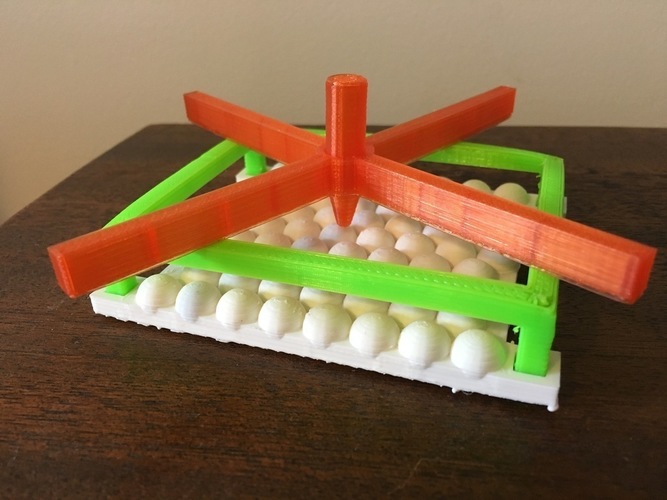
Atomic Force Microscope Model
pinshape
Human: A model illustrates how an atomic force microscope or scanning-tunneling microscope operates to "see" atoms and molecules. Slide the scaffold piece of the frame and the tip will rise and fall to feel out the surface. You can modify the surface with different features such as steps or islands. It simplifies how AFM and STM work but conveys the basic idea across of mapping out a surface which is too small to see with visible light. Eventually, I want to cover the surface so my students could map out what the surface looks like by measuring the change in height of the tip as they "scan" the surface, as well as make other surface structures that can be mapped out. Printer: Da Vinci Jr. Rafts: No Supports: No Infill: 5% The frame and tip files are set so the pieces print upside down, allowing them to be printed without supports and rafts. Depending on your print bed, a little bit of glue from a glue stick applied to the bed before printing will prevent the longer pieces from curling upwards as they cool. Standards NGSS Overview and Background This model continues the discussion brought about when discussing the history of the atom. Once students understand how we learned about the structure of the atom, it is essential to discuss current technologies that teach us about atoms. The atomic force microscope (AFM) is one such technology. Objectives: Students will be able to describe how atomic force/scanning-tunneling microscopy is used to create an image of an atomic surface. Students will be able to translate change in height data from the tip into a drawing of the surface profile. Students will be able to predict changes in height based on added features to the surface such as islands, steps, and holes. Lesson Plan and Activity: Discuss why light microscopes cannot be used to see atoms and molecules. Describe how to slide the scaffold over the surface so the tip rises and falls. Cover the surface so the students cannot see it and let the students figure out and discuss how such a technique can be used to recreate what an atomic surface looks like, thereby modeling how we can "see" an atomic surface with an AFM. Have students graph the height of the tip vs position in the x and y direction and discuss how the graph shows a profile of the surface. By drawing multiple graphs as the students move the tip across the surface, they can reconstruct a 3D image from 3D slices. This is how AFM and STM works. Materials Needed: AFM Model Graph Paper Folder or cardboard to block view of the model's surface
With this file you will be able to print Atomic Force Microscope Model with your 3D printer. Click on the button and save the file on your computer to work, edit or customize your design. You can also find more 3D designs for printers on Atomic Force Microscope Model.
